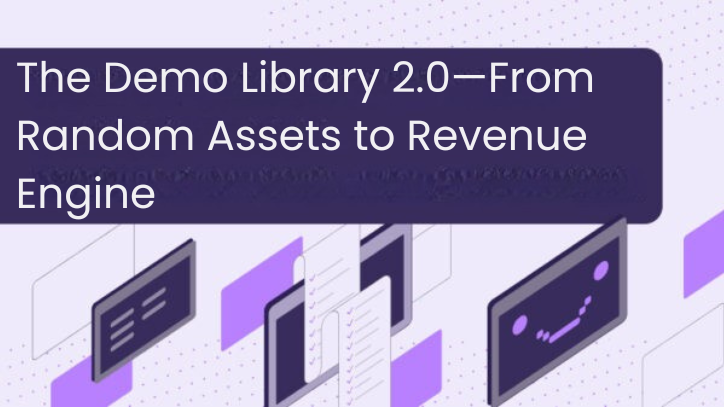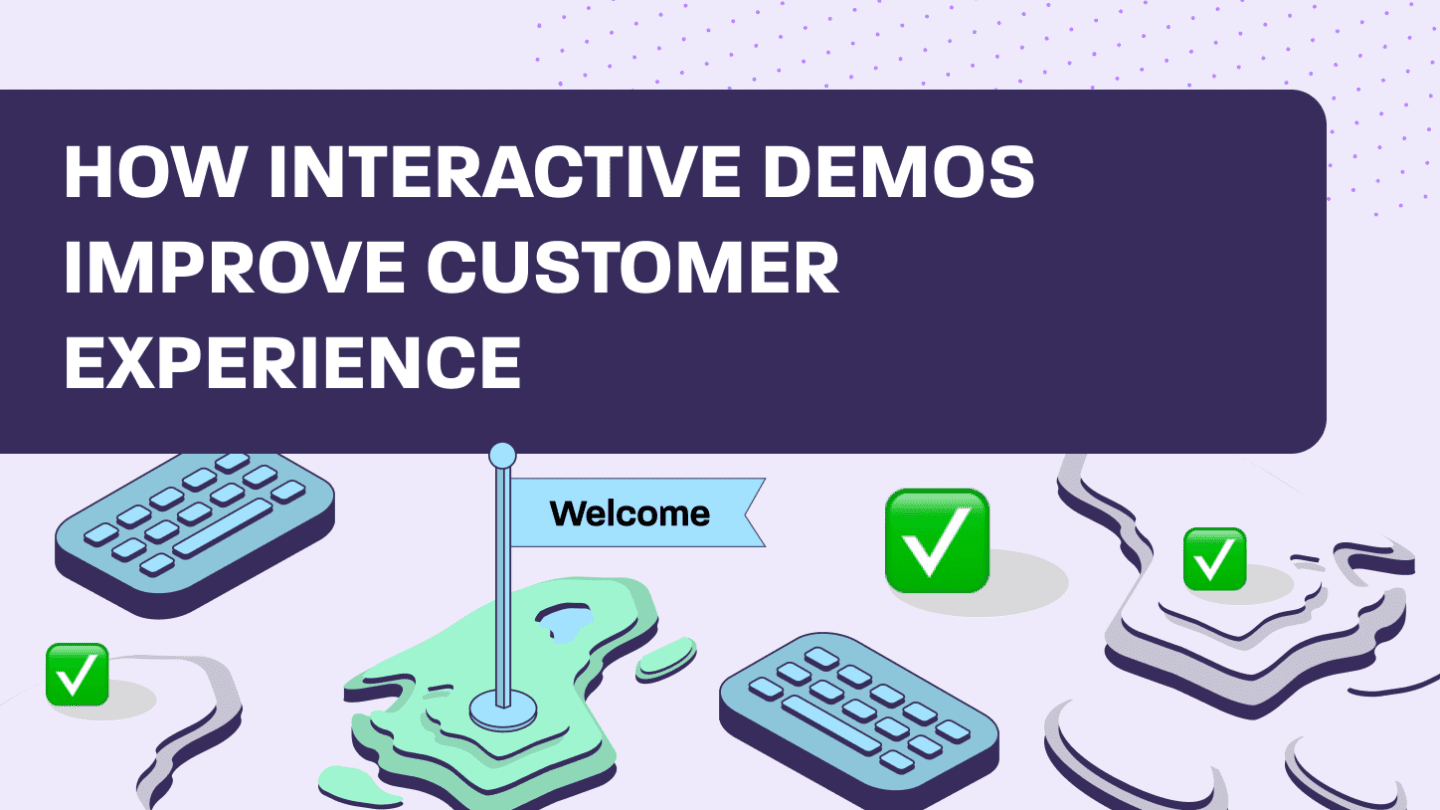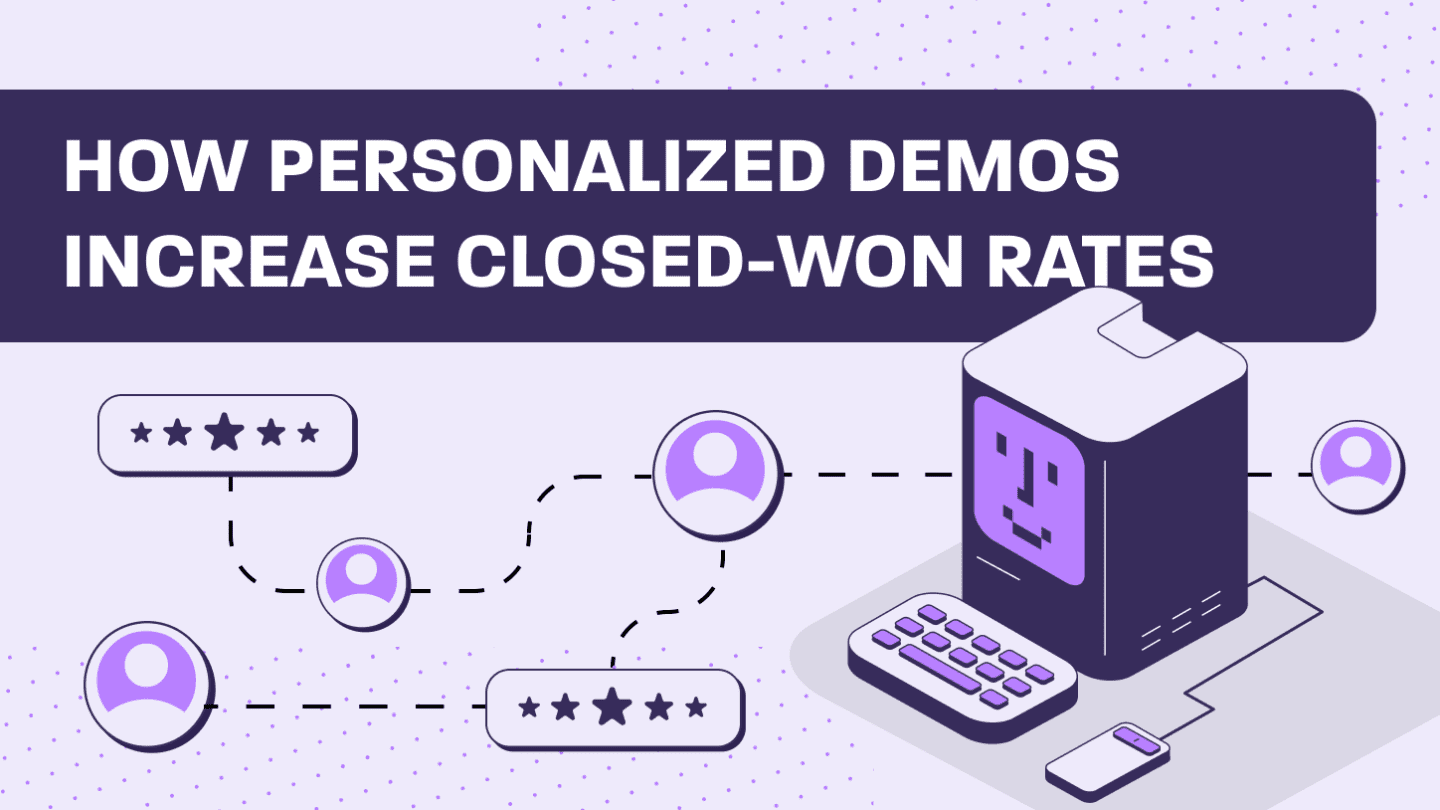After a recent conversation with a sales-engineering leader who has scaled demo programs at multiple global SaaS firms, one phrase stuck with me: “Our library has to tell a defined value journey and make it impossible for a rep to drive off-road.” That vision—equal parts freedom and guardrail—captures the ideal state of a modern demo library. Below is a blueprint, backed by the 2025 Global Pre-Sales & Demo Workflow Trends Report, for what “good” looks like and how to get there.
1. Why the Library Matters Right Now
- Capacity crunch. The most common coverage model is ≥ 5 AEs per SE (44 %), while half of presales leaders say they’re understaffed.
- Customization drag. 56 % of presales pros say tailoring every demo is “excessively time-intensive.”
- DIY overload. 70 % of companies still rely on hacked-together slide decks or internal tools instead of a purpose-built platform.
- Data dark spots. 44 % admit they can’t measure demo effectiveness in a defensible way.
A well-architected library strikes all four pain points: it frees SE hours, lets AEs run credible early-stage demos, standardises messaging, and produces telemetry the CFO will believe.
2. Five Pillars of the Ideal Demo Library
| Pillar | What “great” looks like | Report datapoint it solves |
| Modular, interactive assets | HTML-based or sandbox demos that clone in minutes; no fragile slideware | Only 20 % have true demo-automation today—headroom is huge |
| Curated journeys & guardrails | Pre-mapped paths by stage, persona and problem so reps can’t meander | 36 % cite inconsistent messaging as a blocker |
| Single throat to choke | One team (usually SE) owns version control, data hygiene, and retirement | Fragmented ownership drives the “multiple-truths” problem |
| Personalisation at scale | Token-based branding, feature toggles, sample-data injection in < 5 min | Tackles the 56 % customisation time sink head-on |
| Embedded analytics loop | Click-paths tied to CRM opp IDs; heat-maps guide next steps | Closes the 44 % analytics gap and moves presales from cost to revenue |
3. Anatomy of a High-Impact Asset
1. Core overview—five-minute guided tour with generic data
2. Branching vertical paths—e.g., fintech compliance, health-tech analytics
3. Persona overlays—economic buyer vs. admin vs. power user
4. Call-to-action layer—book a deep dive; launch a sandbox; share with peers
Interactive tokens change logos, currencies or language on the fly, while role-based tooltips keep AEs from slipping into feature dumps. The result: a “choose-your-own-adventure” that still lands a consistent story.
4. Operating Model in Practice
| Funnel step | Owner | Library asset | Outcome |
| Lead self-educates | Marketing | Public on-demand tour | Captures buyers who “avoid sales calls” (Gartner says 33 % want seller-free journeys) |
| Discovery follow-up | AE | Guided intro tour | Replaces live 101 demo—frees SE calendar |
| Technical validation | SE | Clone-on-demand sandbox | Cuts prep from days to minutes; avoids 28 % environment-break risk |
| Exec recap | AE+SE | Analytics snapshot | Ties engagement to ROI for the buying committee |
Early adopters are already close: 50 % run sandbox environments, 46 % use standard scripts, and 42 % ship on-demand demos
5. Quantifying the Lift
| KPI | Before library | 12-month target |
| AE : SE coverage | 5 : 1 | 7 : 1 with no quality loss |
| Prep time per intro demo | 4–6 h | < 30 min |
| SE hours on Tier-C leads | 20 % | 0 % (self-serve only) |
| Demo-to-oppty conversion | Baseline | +10 % with heat-map optimisation |
If an SE costs $125k fully loaded and wastes 12 h/week on low-value demos, reclaiming half those hours yields $40k per engineer per year—enough to fund the automation stack twice over.
6. Crawl-Walk-Run Roll-Out
- Crawl – Centralise & tag. Dump every deck, video and sandbox link into one hub; tag by stage and persona.
- Walk – Rebuild the top three journeys in interactive form. Include tokens for logos and data; add basic event tracking.
- Run – Automate cloning & CRM tie-ins. One-click create a sandbox with synthetic data; feed click-paths straight to opportunity records.
The demo-strategy leader in our call recommended tackling the “hard-to-demo modules first”: “Win those quick credibility fights and the field will drive adoption for you.”
7. What Good Looks Like to Executives
- Board confidence. 74% of leaders already believe presales drives revenue—a metrics-rich library turns belief into proof.
- Budget unlock. Demo-process modernisation ranks 5.1/7 in spend priority; 60% rate it a top investment. Show the capacity delta and Finance signs the cheque.
- Competitive wedge. With only 14 % on commercial platforms today, a mature library is still a differentiator.
8. Common Pitfalls (and How to Dodge Them)
| Trap | Symptom | Fix |
| “Junk-drawer” library | Reps can’t find assets in < 30 s | Stage/problem filters and search |
| Over-personalisation | SEs slip back to bespoke builds | Enforce 80-20 rule: clone first, custom later |
| No retirement process | Outdated flows resurface | Quarterly audit with kill dates |
| Analytics without action | Dashboards ignored | Tie alerts to pipeline scoring and coaching |
9. The End State
- Every rep can launch a guided, on-brand demo in under a minute.
- SEs touch only deals that justify deep engineering.
- Leaders see click-to-close correlations on a dashboard, not in anecdote.
- The buyer experiences a seamless, data-rich journey—from website tour to post-sale sandbox—without ever feeling like the story changed hands.
As our anonymous demo-strategy leader put it, “If the library works, by the time we jump on a live call the customer is already three steps ahead—and we can spend the hour solving, not showing.” Build that, and your demo program graduates from “nice slide deck” to hard growth lever.
Stop wasting time on disconnected assets and start building a scalable, data-driven demo strategy your whole team can trust.
👉 Create your first interactive demo now





